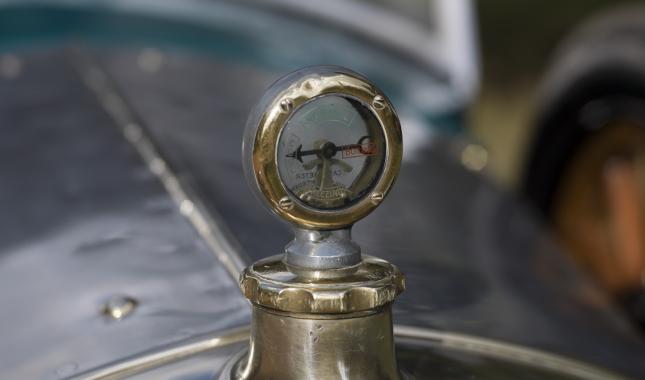Personalising the car
An automobile is mass-produced in large numbers with identical features. At the beginning of the 20th century, cars were produced in small runs by assembly factories (around a hundred models at a time) on an undercarriage frame.
The bodywork and the accessories were added by the purchaser.
Radiator mascots were a way for the owner to express his personality.
The museum contains several types of spare parts and accessories including a collection of radiator mascots, either mounted on the cars or exposed in showcases.

Mascotte de radiateur femme ailée
Vers 1900
Mascotte de radiateur manomètre Rochet Schneider
1923
Mascotte de radiateur « spirit of exctasy » Rolls Royce
1934
Mascotte de radiateur « cigogne » Hispano Suiza
1936
Mascotte de radiateur Peugeot 203
1948
Mascotte de radiateur Citroën 2CV
1948
Mascotte de radiateur éléphant

Mascotte de radiateur plongeuse
Legendary mascots
Some prestige brands, from the beginning, added a mascot to the radiator cap to reinforce their identity.
Rolls Royce is forever associated with its mascot of the winged woman entitled ‘Spirit of Ecstasy’, designed in 1911 by the British sculptor Charles Sykes.
Similarly, the Spanish-Swiss manufacturer, Hispano-Suiza, used a stylised crane in flight. This was in homage to the squadron of the crack French aviator of the First World War, George Guynemer.

